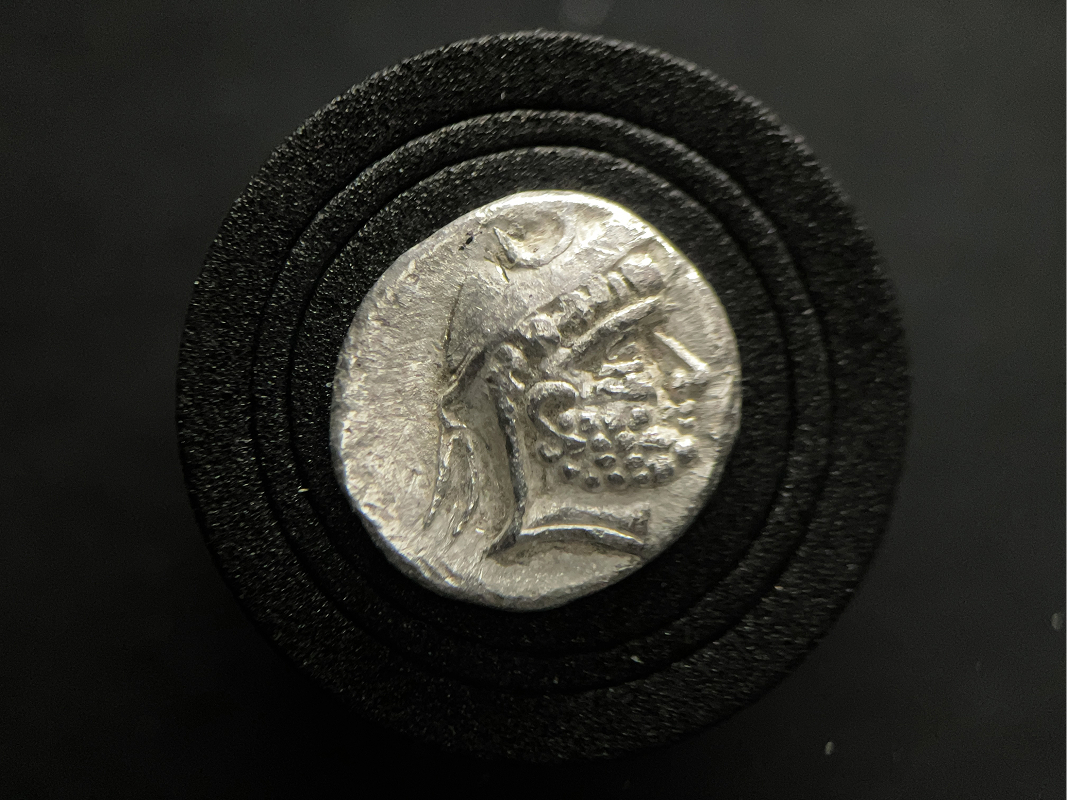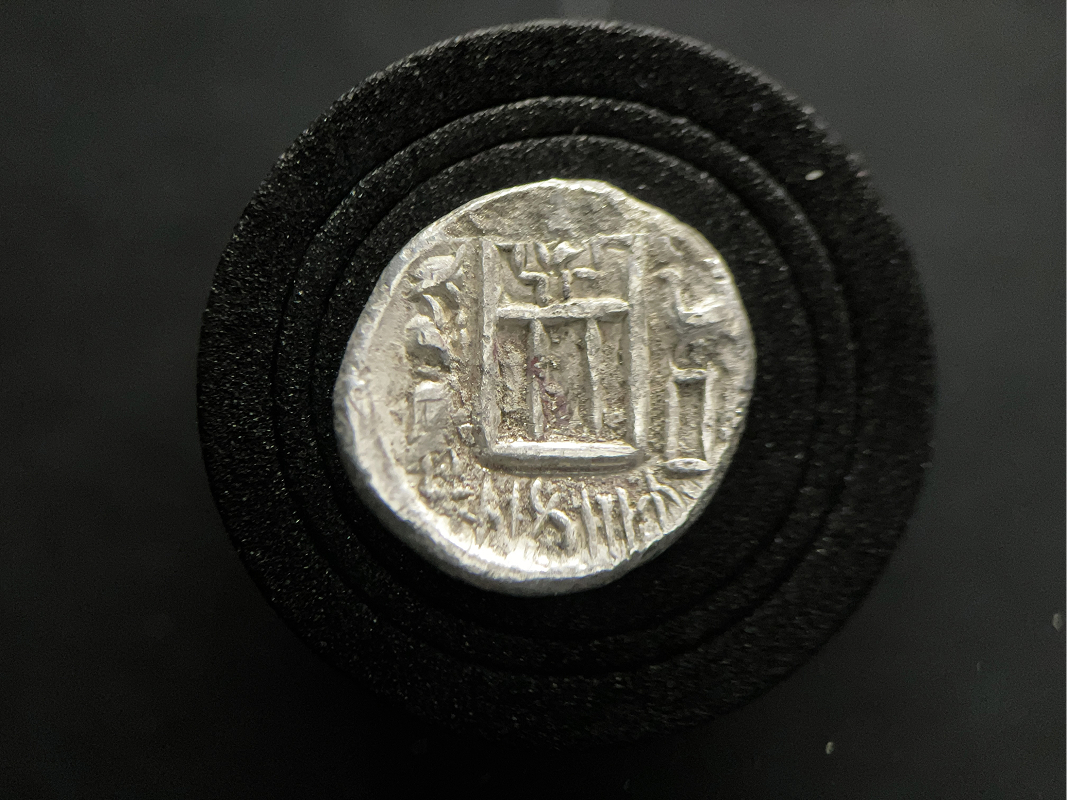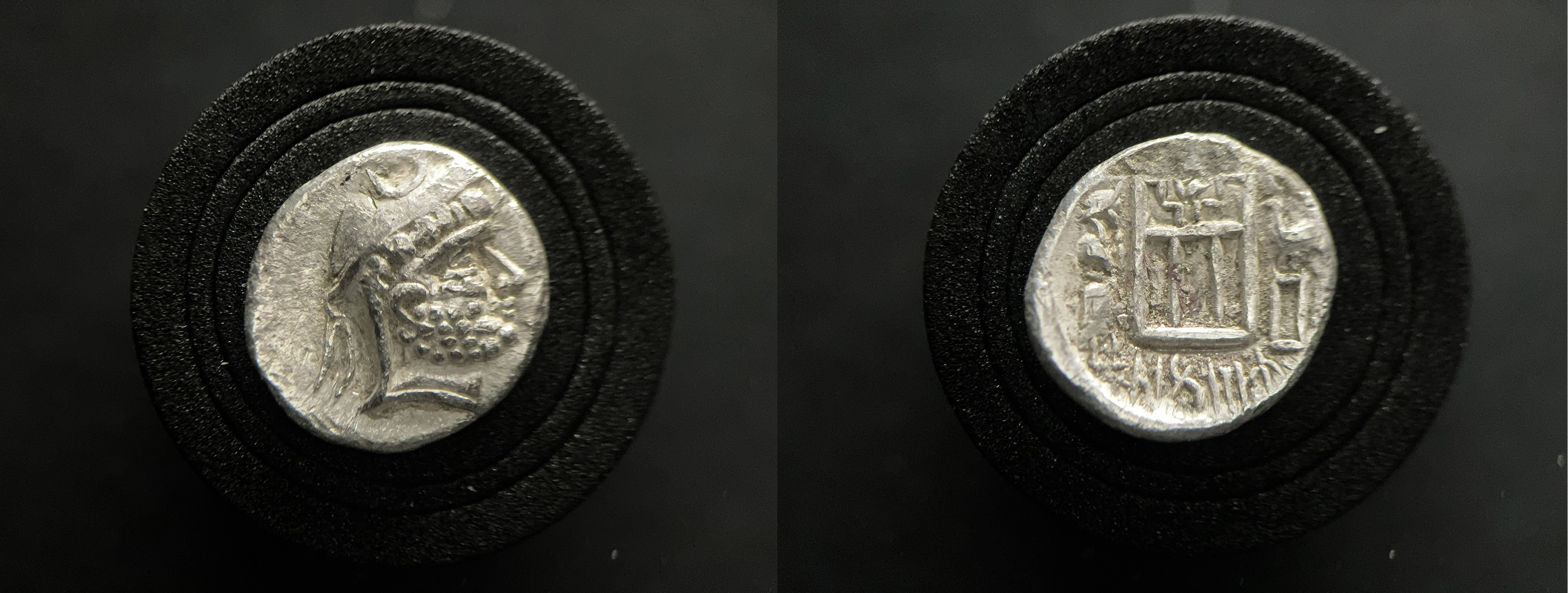KINGS OF PERSIS – Dārēv (Darios) I / Darayan I
Reign: ca. 150–100 BC
Region: Persis (modern Fars, southwestern Iran)
Denomination: Hemidrachm (½ Chian-Rhodian standard)
Material: Silver
Weight: 1.56 g
Diameter: 14.16 mm
Die Axis: 3h
Catalog ID: PERS-DAR1-AR-HEM-001
Obverse:
The obverse features a regal bearded bust of King Dārēv I, turned right, wearing the causia, a flat-brimmed cap with an engraved crescent moon resting atop. The crescent likely symbolizes lunar divinity or cosmic power, continuing Achaemenid and Near Eastern traditions of divine authority through celestial emblems.
Reverse:
The reverse presents one of the most iconic layouts in Zoroastrian coin iconography:
- Fire Altar at center, the core sacred symbol of Zoroastrianism
- King standing right, in reverence
- Eagle atop standard at the right, symbolizing divine witness or imperial authority
- Ahura Mazda depicted hovering above, the supreme deity of Zoroastrianism
This triadic representation (altar–king–Ahura Mazda) strongly anchors the coin’s purpose as both economic medium and theological-political propaganda.


Inscription
Aramaic legend beneath the scene:
𐡉𐡀𐡍𐡅𐡍𐡀𐡆𐡑𐡍
Transliteration: yhnwn’ zpn
Translation: King Darios
Aramaic was a formal script retained from the Achaemenid imperial period. Though Greek was prevalent in Parthian-era coinage, the rulers of Persis deliberately chose Aramaic to assert their local legitimacy, cultural independence, and connection to ancient Persian kingship.
Historical Significance
The Kings of Persis ruled as local dynasts under Parthian suzerainty, yet maintained a distinct cultural-political identity. This hemidrachm of Dārēv I is a clear revivalist expression, invoking Zoroastrian piety, Achaemenid heritage, and native script to strengthen his claim over the heartland of Persian civilization.
The fire altar and Ahura Mazda image, absent in contemporary Seleucid or early Parthian issues, underscore Persis’ unique religious-national narrative.
Condition & Numismatic Notes
- Sharp definition in bust and altar relief
- Aramaic lettering legible, especially beneath altar
- Small flan with minor edge wear
- Classic silver toning consistent with Persis silver strikes of the late 2nd century BC
Interested in this Coin?
Whether you’re an academic, private collector, or Zoroastrian heritage enthusiast, this piece bridges Persia’s Achaemenid roots and Parthian-era identity.

